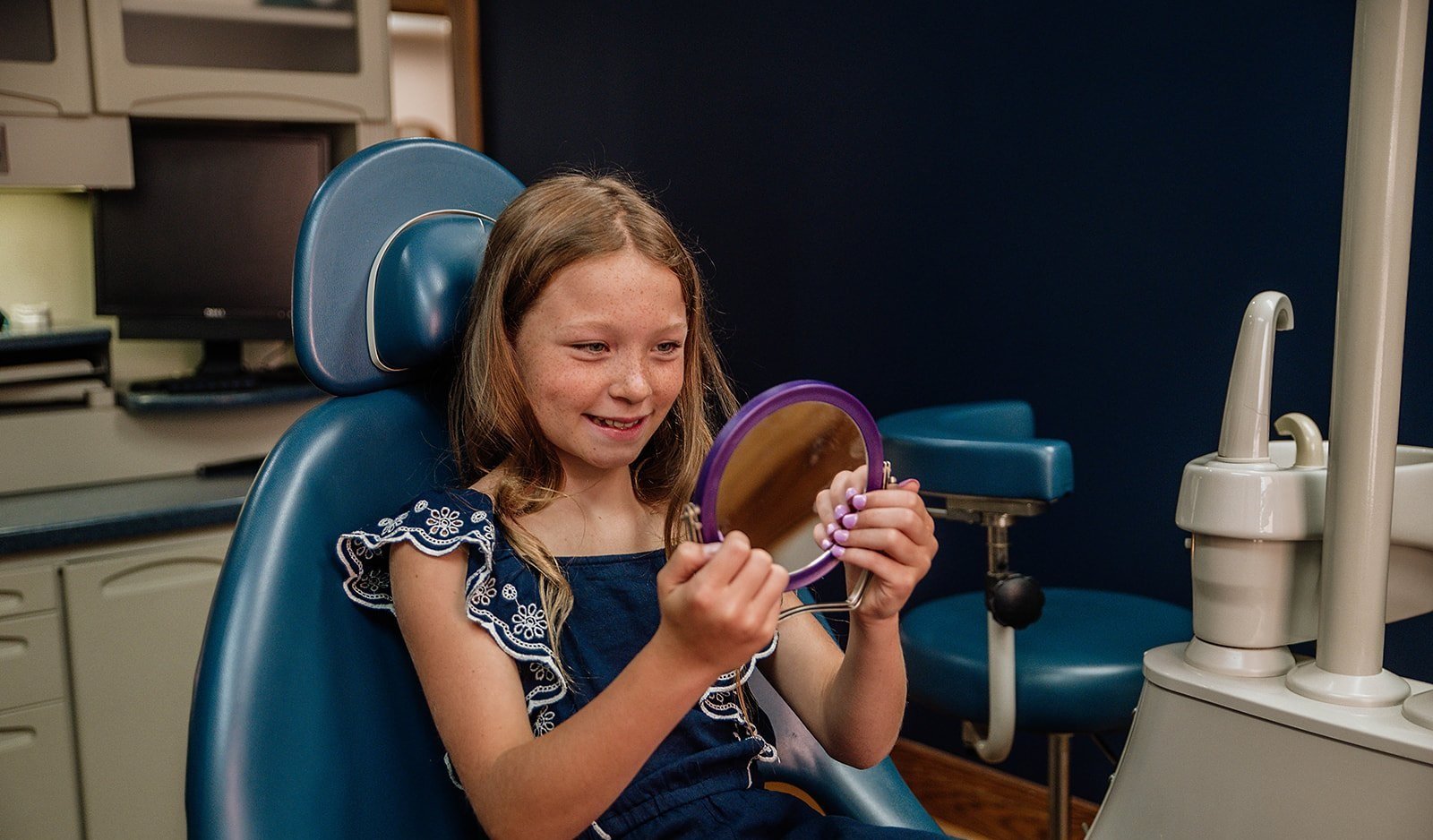

PEDIATRIC PULP THERAPY
Pediatric pulp therapy is known by several other names including root canal, pulpotomy, pulpectomy and nerve treatment. The primary goal of pulp therapy is to treat, restore and save the affected tooth.
The “pulp” of a tooth cannot be seen with the naked eye; it’s found at the center of each tooth and is comprised of nerves, tissue and many blood vessels that work to channel vital nutrients and oxygen.
There are several ways in which pulp can be damaged. Most commonly in children, tooth decay or traumatic injury lead to painful pulp exposure and inflammation.
Pediatric dentists perform pulp therapy on both primary (baby) teeth and permanent teeth. Though primary teeth are eventually shed, they are needed for speech production, proper chewing, and to guide the proper alignment and spacing of permanent teeth.

PULP INJURY & INFECTION SIGNS
Inflamed or injured pulp is exceptionally painful. Even if the source of the pain isn’t visible, it will quickly become obvious that the child needs to see the pediatric dentist.
Signs & Symptoms Include:
Constant unexplained pain
Nighttime pain
Sensitivity to warm and cool food temperatures
Swelling or redness around the affected tooth
Unexpected looseness or mobility of the affected tooth

WHEN TO UNDERGO PULP THERAPY
Every situation is unique. The pediatric dentist assesses the age of the child, the positioning of the tooth, and the general health of the child before making a recommendation to either extract the tooth or to save it via pulp therapy.
There are several undesirable consequences of prematurely extracted/missing teeth, including:
The arch length may shorten.
In the case of primary tooth loss, permanent teeth may lack sufficient space to emerge.
Opposing teeth may grow in a protruding or undesirable way.
Premolars may become painfully impacted.
Remaining teeth may “move” to fill the gap.
The tongue may posture abnormally.

HOW IS PULP THERAPY PERFORMED?
The pediatric dentist will perform visual examinations and evaluate X-rays of the affected areas. The amount and location of pulp damage will dictate the nature of the treatment. The pediatric pulpotomy and pulpectomy procedures are among the most common performed.
PULPOTOMY
If the pulp root remains unaffected by injury or decay, meaning that the problem is isolated in the pulp tip, the pediatric dentist may leave the healthy part alone and only remove the affected pulp and surrounding tooth decay. The resulting gap is then filled with a biocompatible, therapeutic material, which prevents infection and soothes the pulp root. Most commonly, a crown is placed on the tooth after treatment to strengthen the tooth structure, minimizing the risk of future fractures.
PULPECTOMY
In the case of severe tooth decay or trauma, the entire tooth pulp (including the root canals) may be affected. In these circumstances, the pediatric dentist must remove the pulp, cleanse the root canals, and then pack the area with biocompatible material. The final step is to place a crown (can be tooth-colored) on the tooth to add strength and provide structural support. This usually takes several office visits.
